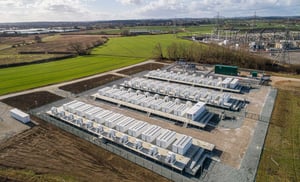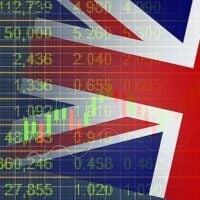Halma plc (LSE: HLMA.L) stands as a formidable entity within the Industrials sector, renowned for its innovative technology solutions that span safety, healthcare, and environmental markets across the globe. With a robust market capitalisation of $10.3 billion, this UK-based conglomerate is a significant player in its field, offering investors a comprehensive portfolio of products and services that cater to a wide variety of essential needs.
**Current Market Performance**
Trading at 2730 GBp, Halma’s stock sees a marginal increase, reflecting a price change of 0.01%. This places it well within its 52-week range of 2,206.00 to 3,070.00 GBp, suggesting a degree of stability and resilience in turbulent market conditions. Despite a forward P/E ratio of 2,763.02, which may initially appear daunting, the company’s consistent revenue growth of 13% indicates a strong underlying business performance and potential for future gains.
**Valuation and Financial Health**
While some traditional valuation metrics such as PEG Ratio, Price/Book, and EV/EBITDA are not available, investors can take solace in Halma’s notable free cash flow of £302 million. This financial flexibility supports its operations and strategic initiatives, providing a buffer against economic uncertainties. The return on equity stands at an impressive 16.90%, underscoring efficient management and a robust ability to generate profits from shareholders’ equity.
**Dividend Insights**
With a dividend yield of 0.81% and a payout ratio of 28.57%, Halma presents a modest yet reliable income stream for investors seeking dividend returns. This conservative payout ratio suggests that the company retains a substantial portion of earnings for reinvestment, aligning with its growth-oriented strategy.
**Analyst Ratings and Future Prospects**
Market sentiment towards Halma is generally favourable, with 5 buy ratings, 11 hold ratings, and only 1 sell rating. The average target price of 2,828.24 GBp points to a potential upside of 3.60%, reflecting cautious optimism among analysts. The target price range spans from 2,200.00 to 3,250.00 GBp, indicating both the challenges and opportunities that lie ahead for the company.
**Technical Analysis**
From a technical standpoint, Halma’s 50-day and 200-day moving averages are 2,697.04 and 2,655.62, respectively, suggesting a positive trend. The Relative Strength Index (RSI) at 67.43 indicates that the stock is nearing overbought territory, which could imply a potential pullback or a continued upward momentum if supported by bullish sentiment. The MACD at 6.56, with a signal line of -22.89, further suggests a positive outlook, although investors should be mindful of potential volatility.
**Strategic Positioning and Global Reach**
Incorporated in 1894 and headquartered in Amersham, Halma has built a reputation for its comprehensive suite of products that safeguard public spaces, enhance industrial operations, and improve healthcare outcomes. Its operations are divided into three primary segments: Safety, Environmental & Analysis, and Healthcare. This diversification not only mitigates risk but also positions Halma to capitalise on emerging trends in each sector.
The Safety segment’s offerings, ranging from fire safety to urban safety solutions, are critical in today’s world where security and protection are paramount. The Environmental & Analysis segment addresses the increasing demand for environmental monitoring and optical analysis, while the Healthcare segment supports advancements in patient health analytics and life-sciences research.
**Conclusion**
For investors seeking exposure to a company that combines stability with growth potential, Halma plc presents a compelling proposition. Its strategic focus on essential markets, coupled with a strong financial footing, ensures that it remains well-positioned to weather economic uncertainties and capture future opportunities. As with any investment, potential investors should conduct thorough due diligence, considering both the opportunities and risks associated with Halma’s market position and financial metrics.





































